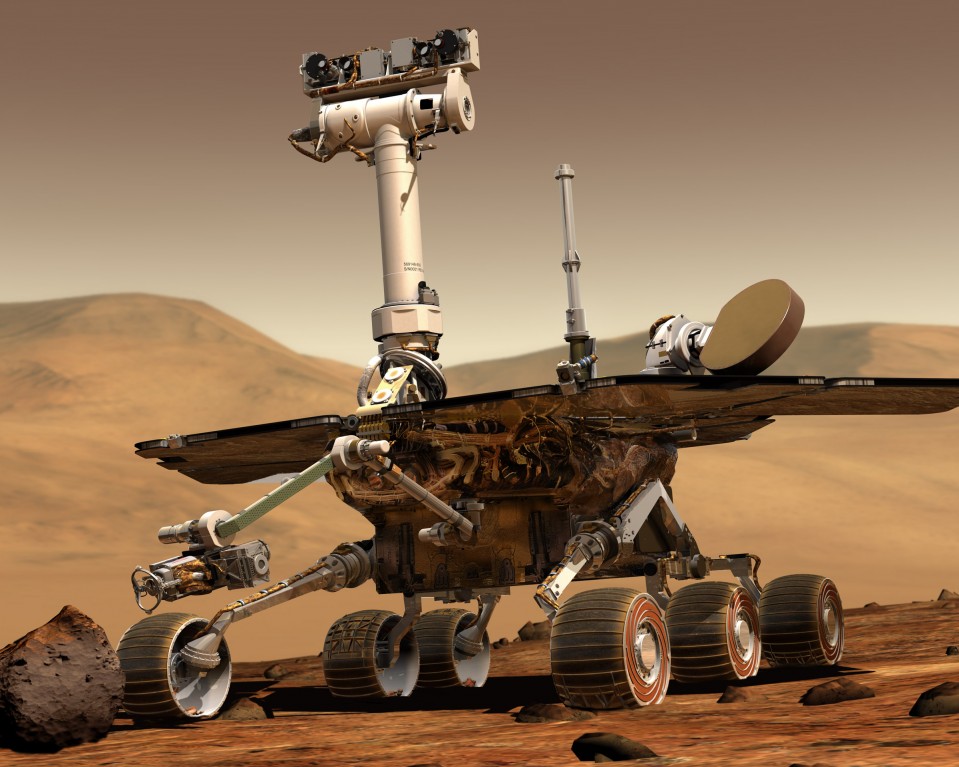

Artificial Intelligence / Robots
It’s official. NASA has finally called the end of the Opportunity Mars rover mission.
NASA has ended its attempts to communicate with the robot, which has been on Mars for 15 years.

Update at 2 p.m. EST, Feb. 13:
In a press briefing, NASA announced the end of the mission after more than 800 attempts to contact the Mars rover Opportunity.
A 2018 planet-wide dust storm caused a loss of comms with the Opportunity rover. Tonight, the @MarsRovers team will make the last planned attempts to communicate with the solar-powered rover. Join us tomorrow at 2pm ET as we share results of those efforts: https://t.co/332C7Vqk1H pic.twitter.com/Z4Rh8hckMh
— Thomas Zurbuchen (@Dr_ThomasZ) February 12, 2019
It looks as if the Mars rover Opportunity has finally reached its end after 15 years on the Red Planet. After an intense storm hit the rover last June, Opportunity went silent. Since September, the team at NASA has been using a “sweep and beep” process to try to contact the robot, which involves sending commands and waiting to hear a beep back. We haven’t heard one.
There it is--the jagged line uplink with commands--WAKE UP OPPY https://t.co/EtVyX3kGFp pic.twitter.com/4enz4CPncr
— Shannon Stirone (@shannonmstirone) February 13, 2019
NASA announced yesterday that the team would be putting in its final efforts to contact the rover last night, and would announce the results today. But it doesn’t look good.
Spent the evening at JPL as the last ever commands were sent to the Opportunity rover on #Mars. 💔
— Dr. Tanya Harrison (@tanyaofmars) February 13, 2019
There was silence. There were tears. There were hugs. There were memories and laughs shared.#ThankYouOppy #GoodnightOppy pic.twitter.com/JYRPtKZ8T5
We could see the final uplink commands being sent through the Deep Space Network, the global network of communications facilities that helps NASA send messages to its spacecraft.
But tweets from the people in the control room last night suggest that those attempts were met with silence.
Winter is coming. The windy season, which runs from November – January has come to an end. Bad news for Oppy. It'll be dark and temps could reach -100C. One key way she stays warm is by moving around. 5/
— Jacob Margolis (@JacobMargolis) February 12, 2019
We’re still awaiting official word from NASA in the form of a press briefing at 11 a.m. PST (2 p.m. EST), but it seems certain that this is the end for the rover.
The team was hoping that the windy season on Mars would help clear off Opportunity’s solar panels, allowing it to power up again. But now, after months of trying, winter is approaching.
We said goodbye to Opportunity’s companion rover, Spirit, back in 2011 which stopped communicating with NASA on March 22, 2010 (see “Goodbye, Spirit: An Explorer of the Red Planet”). Spirit and Opportunity landed on opposite sides of the planet in 2004.
In its time on Mars, Opportunity provided data that helped advance our understanding of our planetary neighbor. It has traveled over 45 kilometers, sending back a treasure trove of images, and discovered the first signs of ancient ice.
But this is by no means the end of science on Mars. The legacy lives on in the form of Curiosity and InSight. The Curiosity rover, which landed on Mars in 2012, is still helping researchers uncover how certain craters and mountains formed, while the InSight probe is on the hunt for Marsquakes.